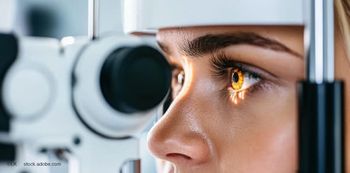
Trial results of wet AMD treatment positive
The 2-year results of Oraya Therapeutics Inc.’s Intrepid study of Oraya Therapy Stereotactic Radiotherapy for the treatment of wet age-related macular degeneration (AMD) have come back favorable.
Newark, CA-The 2-year results of Oraya Therapeutics Inc.’s Intrepid study of Oraya Therapy Stereotactic Radiotherapy for the treatment of wet age-related macular degeneration (AMD) have come back favorable.
The results provide continued evidence of a favorable safety profile and the therapy’s ability to reduce the frequency of anti-vascular endothelial growth factor (VEGF) injections in the eye.
The broadly inclusive cohort of non-naïve wet AMD patients continued to receive the benefit of a 25% mean reduction in anti-VEGF injections over 2 years.
Patients identified in the first year as ideal response candidates maintained a 45% mean reduction in anti-VEGF injections through the 2-year study, with superior vision to the non-treated group.
The overall safety profile was also positive, with only 1% of treated patients showing evidence of micro-vascular abnormalities due to radiation that could affect vision outcomes.
“A treatment that offers the prospect of fewer injections will be welcomed by clinicians and patients alike,” said Timothy L. Jackson, PhD, FRCOphth, King’s College Hospital, London, lead investigator for the Intrepid trial. “Importantly, if we select the right patients, vision appears to be better than with anti-VEGF monotherapy. The safety at 2 years is also encouraging, in that most micro-vascular changes were located away from the fovea, and so did not have an impact on vision.”
The full 2-year efficacy and safety results were presented in late September at EURETINA 2013 in Hamburg, Germany.
For more articles in this issue of Ophthalmology Times eReport, click
To receive weekly clinical news and updates in ophthalmology,
Newsletter
Don’t miss out—get Ophthalmology Times updates on the latest clinical advancements and expert interviews, straight to your inbox.













































.png)


